by Brooks Riley
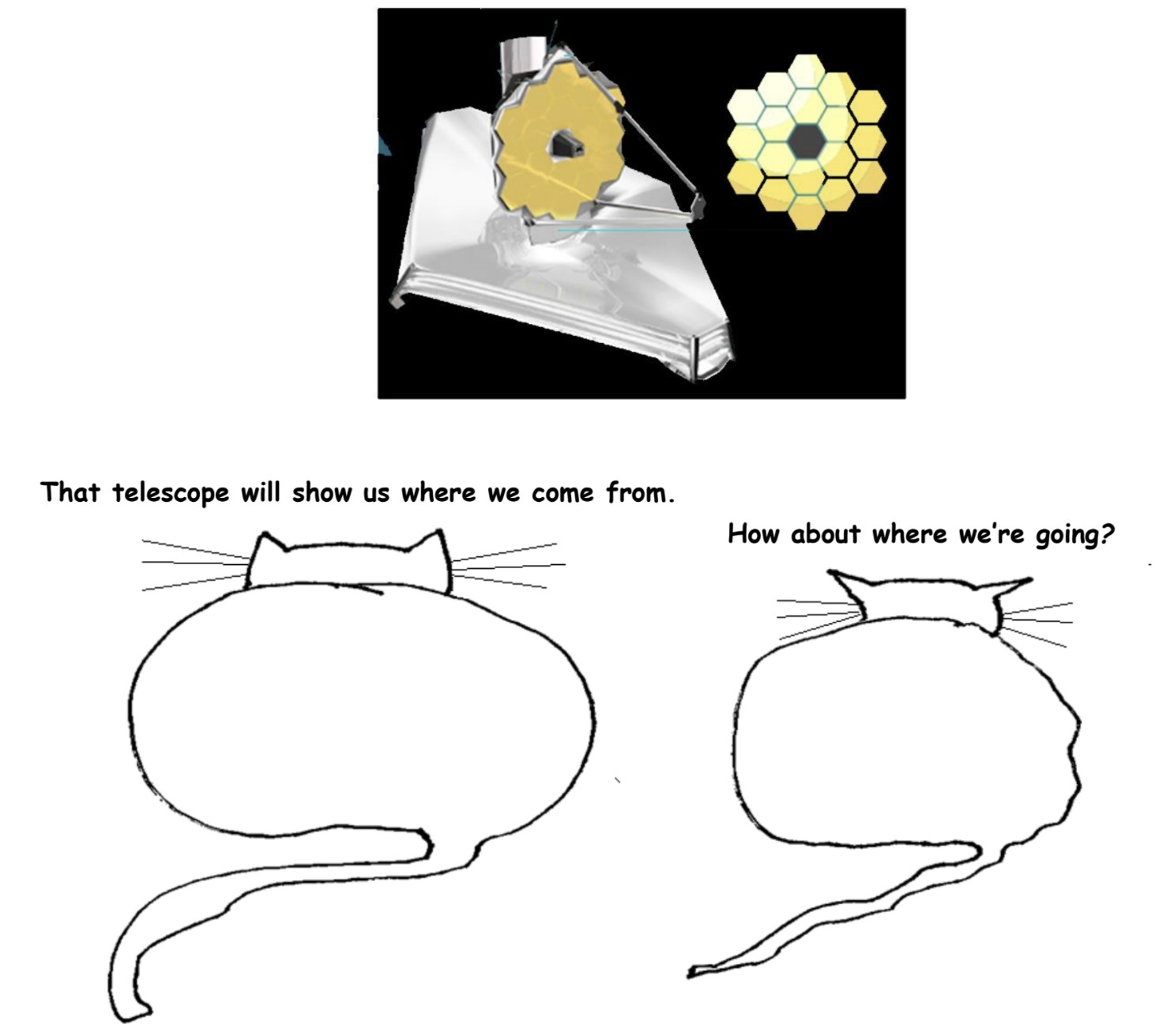
by Brooks Riley

by Chris Horner

It is everywhere: the production of words designed to promote the fiction that something positive and good is happening, even though it isn’t. It comes courtesy of the people you work for, the retail outlets you shop from, and the government organisations that regulate your life. An example: a large organisation develops and with fanfare publishes a document laying out its ‘values’ – under titles like ‘ trust’, ‘inclusivity’, ‘courage’, diversity’, and ‘respect’. It stresses how the individual is valued, the importance of diversity in the workplace, mental health, freedom from harassment and so on. This extends to recruitment and promotion: everywhere diversity, respect and fairness rule: they are ‘investing in people’. Meanwhile, workers at this place have had no real terms pay increase in a decade, overtime and overwork is commonplace, and the complaints system is bureaucratic and agonisingly slow. In the coronavirus epidemic, while desk bound staff were encouraged to work at home, catering and cleaning staff had to appear at the workplace as usual – and naturally, the lower paid stuff doing this are disproportionately female and black. Feeling stressed by the long hours and low pay? There’s an after hours yoga class for that, and a values document to read.
The mass production of warm sounding words with minimal interest in real material outcomes is signifying bullshit (SB). It is nearly ubiquitous. A vast amount of time is spend promoting the idea to consumers that a pair of boots, or a coffee or a shampoo is somehow saving the planet or conquering hunger in Africa; the public is encouraged to tweet or post their reviews of the goods they’ve bought, as retailers and the media outlets that boost them all want your warm words, too. There’s an ocean of participation and inclusivity, although it is not clear who is reading all this stuff. Read more »
by Dwight Furrow
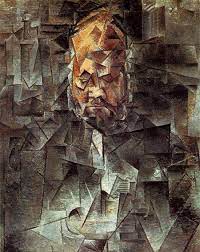
Many works of art seem to be about something. Even if they don’t convey a clear message, they nevertheless invite thought about a subject matter and thus can be said to represent an object, process, or state-of-affairs. Does this language of representation help clarify the sense in which some wines can be considered works of art? In what sense does a wine represent something?
The obvious candidate for the subject matter of a wine is its terroir—the soil, climate, weather, and other geographical and geological features of the place in which the grapes are grown. Wine presents a subject matter—the nature of its terroir—and invites us to explore it via the flavors, aromas, and textures of the wine, just as a painting presents a subject matter and invites us to explore it via line, shape, and color. Thus, wine has the “aboutness” relationship that is generally regarded as a necessary condition for representation.
But how does wine present a subject matter? What is the nature of this “aboutness” relationship? Read more »
by John Allen Paulos
 Covid has given rise to a variety of counterintuitive mathematical outcomes. A good example is this recent headline (link below): One third of those hospitalized in Massachusetts are vaccinated. Anti-vaxxers have seized on this and similar such factually accurate headlines to bolster their positions. They, and others as well, interpret them as evidence that the vaccine isn’t that effective or perhaps hardly works at all since even states with very high vaccination rates seem to have many breakthrough infections that lead to hospitalization. Contrary to intuition, however, such truthful headlines actually indicate that the vaccine is very effective. I could cite common cognitive biases, Bayes’ theorem, graphs, tables, and formulas to explain this, but a metaphor involving fruit may be more convincing and more palatable.
Covid has given rise to a variety of counterintuitive mathematical outcomes. A good example is this recent headline (link below): One third of those hospitalized in Massachusetts are vaccinated. Anti-vaxxers have seized on this and similar such factually accurate headlines to bolster their positions. They, and others as well, interpret them as evidence that the vaccine isn’t that effective or perhaps hardly works at all since even states with very high vaccination rates seem to have many breakthrough infections that lead to hospitalization. Contrary to intuition, however, such truthful headlines actually indicate that the vaccine is very effective. I could cite common cognitive biases, Bayes’ theorem, graphs, tables, and formulas to explain this, but a metaphor involving fruit may be more convincing and more palatable.
Let’s assume we have a very large casserole pan full of cherries and a small bowl of grapes. Say there are 500 cherries in the huge pan and 50 grapes in the small bowl. Further assume that the cherries alone have been treated with a substance that very substantially reduces spoilage and that nevertheless 3 of them are spoiled, as are 7 of the untreated grapes. Now for the perhaps obvious punchline, let’s identify these 550 fruit with people in a highly vaccinated state, the cherries with the vaccinated people, the grapes with the unvaccinated people, and the spoiled 10 pieces of fruit with those who are hospitalized. Read more »
by Pranab Bardhan
All of the articles in this series can be found here.
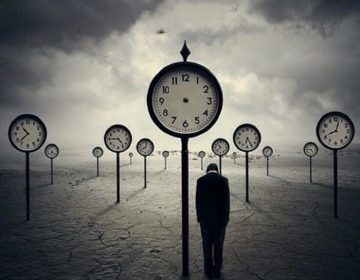 Growing up in India I knew how hierarchical and status-oriented Indian society was, but the city of New Delhi took it to a bureaucratic extreme. I was told that in those days, if you gave out your Government quarters address, people would immediately know your approximate salary scale. The city’s residential pattern, inherited from the colonial rulers, was highly structured. If you are a top Secretary in a Ministry, your assigned quarters will be a large bungalow with acres of gardens in prize real estate in the city center, often a short distance from your office which you traverse in a chauffeur-driven official car. But if you are a lowly clerk or an orderly/peon in the same office building, you’ll come in a crowded bus from many miles away often outside the city.
Growing up in India I knew how hierarchical and status-oriented Indian society was, but the city of New Delhi took it to a bureaucratic extreme. I was told that in those days, if you gave out your Government quarters address, people would immediately know your approximate salary scale. The city’s residential pattern, inherited from the colonial rulers, was highly structured. If you are a top Secretary in a Ministry, your assigned quarters will be a large bungalow with acres of gardens in prize real estate in the city center, often a short distance from your office which you traverse in a chauffeur-driven official car. But if you are a lowly clerk or an orderly/peon in the same office building, you’ll come in a crowded bus from many miles away often outside the city.
Since I used to go to office by bus (until a colleague started giving me a ride in his car), I also noticed a peculiar pattern in the plying of Delhi state buses, compared to the buses I was familiar in Kolkata. You are waiting at a bus stop along with dozens of other people of different age groups and different amounts of baggage with them, and you’ll see bus after bus skipping your stop, particularly if they don’t have to unload any passengers at that stop. (Economists, of course, will point out that the bus driver and conductor on fixed pay have no incentive to take more passengers). And if the bus does have someone getting off at that stop, it will stop some distance away, and by the time all the waiting passengers with their baggages run to reach there, the bus is likely to have sped off. Read more »
by Thomas O’Dwyer

Christmas is one of the most remarkable festivals of human invention, a fact acknowledged by non-Christians no less than people of that faith. The arbitrary association of the birth of Jesus with December 25 merely added a new legend to a festival that was already thousands of years old in a variety of iterations that had the winter solstice as the common denominator. The traditions attached to the holiday have evolved down centuries of differing beliefs, legends, politics, lifestyles — though “tradition” may be too kind a word for the crass commercialism of the modern Christmas season in the United States of Dollarmania. It’s a far cry from Neolithic days and the people who built Stonehenge on Salisbury Plain in England and Newgrange in the Boyne Valley of Ireland, who oriented massive monuments to intercept the sunrise on the morning of the midwinter solstice. Archaeologists have revealed that the residents of Durrington Walls near Stonehenge held large festivals coinciding with this turning point from shortening to lengthening days. And so it began, the accretion of customs, festivities, eating and drinking, link after link down the chain of time to our “Ho ho ho! Buy buy buy!”
Romans dedicated the feast to Saturn, and medieval Europeans booted him aside to celebrate Christ’s Mass, dovetailing devotion with drunken partying. Victorians shaped the modern Christmas sentimentally chronicled by Charles Dickens. Drunken public partying of past centuries gave way to sober child and family-centred celebrations inspired by Queen Victoria, Prince Albert and their nine children. Albert introduced the Christmas tree from his native Germany. Children’s gifts, Christmas cards, crackers, and plum pudding followed, and turkey replaced the traditional goose for dinner. Santa Claus, who had morphed from Saint Nicholas of Myra in Byzantium via Sinterklaas, whom Dutch settlers brought to New York, now appeared on his reindeer sleigh in the Christmas Eve sky over England. American poet Clement Clarke Moore had defined the concept of Santa that still endures — costume, sleigh, reindeer, global gift-giving, chimney antics — in his poem A Visit from St. Nicholas (also called The Night Before Christmas). Read more »
by Charlie Huenemann
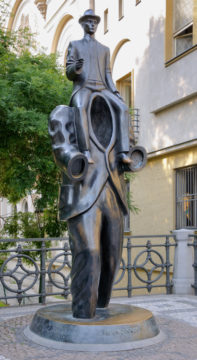
A man rides an empty suit. The suit tells others what to think of the man, though it would not fit him. The man does not control the suit, but merely takes a ride upon it, come what may.
In his twenties, Franz Kafka composed a long story, “Description of a Struggle”, which remains one of his most enigmatic works. It follows a dream-like logic from a party, to a stroll through Prague, to an encounter with “a monstrously fat man” being borne in a litter by four naked men, to a supplicant once known by the fat man who prayed by bashing his own head against the stone floor of a church, to a final scene on a mountaintop, where a stabbing takes place, though it does not seem to be very consequential. The end.
Max Brod thought it was a work of genius, though John Updike thought it was adolescent posturing. (¿Por qué no los dos?) Like all of Kafka’s works, it shows up on your doorstep like a locked desk that you are sure contains something you need, but the key is locked inside it; and when you finally bash the desk open, you find your own corpse with a toe tag reading “GUILTY OF BREAKING THE DESK”. Maybe some of the strange imagery Kafka himself could neither explain nor control, maybe some of it spoke of his own secrets, maybe all of it is an existential parable.
One thing is for sure: the story shatters in every way. We might expect a story with a beginning, middle, and end: nope. We might expect some clarity about just whose story it is: nope. We might expect facts to stay fixed, or people to inhabit their own bodies: nope. We might expect some thread of consistency, conversations that make even minimal sense, words of wisdom that do not culminate in irrelevant banalities. Nope, nope, nope. That the work is offered as a story, and even as a description, is an exaggeration. It’s something, all right, and we may try to read it as a story, but the damned thing will not cooperate. It keeps falling apart the more we try to hold it together, like a human life, come to think of it. Read more »
…. “I’m still dwelling on how ironic all the feverish proclamations of capitalism
…. are going to look someday.” —Justin E. H. Smith, Philosopher
I’m through with dumpster dinners
at the corner of Wall Street and New
I’m so unsold by the Coke sign’s faded blush
that thrusts from desiccated dollar dunes,
an embarrassment, a crass embellishment
stuffed in the cleavage of a spent whore
who promised eternal bliss but ended a hag
with smeared lips and hellish scent,
cyclone’s gone that slew the sacred cow
when gangs of suited crooks blew through
with milking stools to sit beside her tits of gold
with digits itching to draw her dry
with lips pursed to suck her blood
with a singeing sort of lust, twisted,
a rusty screw that drills down and down
until nothing’s left to suck or bust,
I’m done . . . we’ve lurched too long through
spoiled earth as Gabriel’s Mad Ave.
apocalyptic horn rather croaked than blew
.
by Jim Culleny
9/13/14
by Fabio Tollon

We have always been a technological species. From the use of basic tools to advanced new forms of social media, we are creatures who do not just live in the world but actively seek to change it. However, we now live in a time where many believe that modern technology, especially advances driven by artificial intelligence (AI), will come to challenge our responsibility practices. Digital nudges can remind you of your mother’s birthday, ToneCheck can make sure you only write nice emails to your boss, and your smart fridge can tell you when you’ve run out of milk. The point is that our lives have always been enmeshed with technology, but our current predicament seems categorically different from anything that has come before. The technologies at our disposal today are not merely tools to various ends, but rather come to bear on our characters by importantly influencing many of our morally laden decisions and actions.
One way in which this might happen is when sufficiently autonomous technology “acts” in such a way as to challenge our usual practices of ascribing responsibility. When an AI system performs an action that results in some event that has moral significance (and where we would normally deem it appropriate to attribute moral responsibility to human agents) it seems natural that people would still have emotional responses in these situations. This is especially true if the AI is perceived as having agential characteristics. If a self-driving car harms a human being, it would be quite natural for bystanders to feel anger at the cause of the harm. However, it seems incoherent to feel angry at a chunk of metal, no matter how autonomous it might be.
Thus, we seem to have two questions here: the first is whether our responses are fitting, given the situation. The second is an empirical question of whether in fact people will behave in this way when confronted with such autonomous systems. Naturally, as a philosopher, I will try not to speculate too much with respect to the second question, and thus what I say here is mostly concerned with the first. Read more »
by Robyn Repko Waller

Recent news heralds the advancement of the “first living robots,” the scientifically exciting xenobots, and their astonishing ability to self replicate.
Xenobots are millimeter-sized life forms comprised of complexes of frog stem cells (from the species Xenopus laevis), whose shape is tailor engineered by AI according to their human-prescribed task. Capable of locomotion and transport, thanks to their rigid structure and contracting, xenobots have the potential to aid in localized medicine delivery and vital maintenance and clearing functions within a living system. Xenobots may even help gather and clear microplastics. All this from a biodegradable lifeforms, capable of sustaining itself without supplementary nutrients for weeks.
And now researchers Joshua Bongard and Michael Levin and a team of scientists at University of Vermont, Tufts, and Harvard have demonstrated that xenobots can self-replicate, or reproduce, with “parent” xenobots constructing “offspring” xenobots who then in turn produce third-generation offspring xenobots, etc. Evolutionary success? The key being their characteristic “Pac-man” form — a form determined by an evolutionary algorithm from billions of configurations to be optimally conducive to self-replication.
That xenobots are a medical and environmental breakthrough is obvious and scientifically exhilarating. Here I will set aside their groundbreaking applications and technological potential to ask a more philosophically motivated question. Read more »
by David J. Lobina
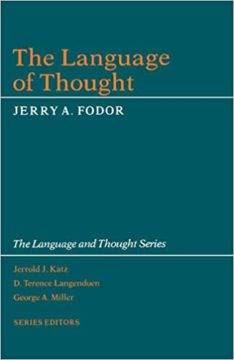
A new post, a novel series, and back to all things cognitive science about language. In this chapter of this column, which hopefully won’t feature any politics but perhaps a little bit of ideology, I will focus on the very thorny issue of how language and thought relate. Or said otherwise, the issue of whether we think in a natural language such as English or Italian, or instead in something else together – in The Language of Thought (LoT), as I shall in fact argue!
The question of how language and thought relate is possibly time immemorial, and the extant literature too large to review satisfactorily in a series of posts. Such a description of the general state of affairs won’t surprise anyone; what may raise a few eyebrows, perhaps, is the claim that large tracts of the modern literature are afflicted by two rather important problems. Firstly, scholars focused on this relationship are hardly ever clear as to what they take language and thought to be exactly, as definitions are rarely put forward; and complementing this, the very same scholars are usually rather vague regarding how language and thought are supposed to relate at all. Read more »
by Mike O’Brien
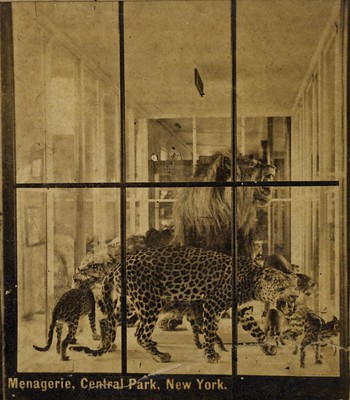
Potentiality and actuality, the difference between what is possible and what is… tout court. I think a lot about design and about the iterative steps between the first dim glimpses of a realized form, and its final perfection. The process itself is something sublime, impressive and compelling apart from its products. I’ve witnessed it in art, in philosophy, and occasionally in the editing of my own work. Something is trying to manifest itself, and rarely crosses over from the imagined to the sensed world perfectly without some struggle. Botched canvases. Blotted pages. Centuries of mostly wrong arguments, dialectically filtered and distilled. Whether or not the ideal is ever reached, the progress towards that limit is something to behold.
Of course, manifest reality is a rough and tumble affair, and instantiated possibilities do not always stay instantiated forever. Techniques are lost, texts crumble away, songs are forgotten. The fact that they did exist seems to carry a different weight than possibility that they could exist. There are books that don’t exist today because they were never written, and there are books that don’t exist because they were burned. Both absences make the world poorer than it could be (assuming that these books are of net positive value, as some are). Read more »
by Brooks Riley

by Mark Harvey
 Sometimes our American ideas about social problems and how to fix them are downright medieval, ineffective, and harmful. And even when our methods are ineffective and harmful, we are likely to stick to them if there is some moralistic taint to the issue. We are the children of Puritans, those refugees who came to America in the 17th century to escape King Charles.
Sometimes our American ideas about social problems and how to fix them are downright medieval, ineffective, and harmful. And even when our methods are ineffective and harmful, we are likely to stick to them if there is some moralistic taint to the issue. We are the children of Puritans, those refugees who came to America in the 17th century to escape King Charles.
To say Puritans had strong beliefs is as understated as saying Genghis Khan enjoyed a little pillaging and conquering out on the Asian steppes. The Puritans were believers like no believers before them. And in general, they weren’t a lot of fun. As if religious services aren’t serious enough, the Puritans eliminated choral music and musical instruments from their churches because those touches were a little too much like the papistry of the Catholic Church. Puritans in Massachusetts even banned Christmas for a spell as they thought the holiday had a pagan origin and therefore embraced idolatry.
The journalist H.L. Menken put it well when he said, “Puritanism is the haunting fear that someone, somewhere, may be happy.”
So when you forge a nation with some strong puritan roots along with some marvelous practicality, such as the United States, sometimes you get pretty mixed up results. The prime example is our colossally counter-productive “War on Drugs,” now 50 years in the works. Read more »
I remember the first time I met Sophia at O’Hara’s the quintessential American café on Restaurant Row in Manhattan’s Theatre District, 35-years ago on the Tuesday before Good Friday.
I remember leaves sprouting after the long winter nakedness.
I remember she paused at the coat check.
I remember she had on a sleeveless, navy blue, pinch-pleated silk dress with spaghetti straps.
I remember her raven hair shining, cut to shoulder length, defining her facial features, smooth nose curving at the tip naturally.
I remember an enticing space between her top two teeth.
I remember her pearl-adorned neck.
I remember the dress hugged her slim waist where the flirty pleats began, hemmed just above her knees, revealing her long legs.
I remember she had on black pumps.
I remember she looked at the mirror behind the oak bar before walking to the corner table where I stood, my hand extended.
I remember heads whipped around.
I remember when our eyes met, I saw a yearning.
I remember offering her a chair.
I remember the scent of jasmine, pale rouge on her cheeks.
“What does the emblem on your blazer mean?” she said. Read more »
Like Lips, Like Skins, Andrea Scrima’s second novel (German edition: Kreisläufe, Literaturverlag Droschl 2021), is a diptych; the first half of the book is dedicated to the first-person narrator’s mother, the second half to her late father. We meet Felice in the early eighties as a young art student in New York and as a newcomer to West Berlin before and after the fall of the Berlin Wall; ten years later, she returns to New York to install an exhibition of her work. Another fifteen years pass and we encounter her as a single mother poring over her father’s journals in search of her family’s past. Like Lips, Like Skins is about art, memory, and the repetitions of trauma. The first chapter was published in issue 232 of the Austrian literary magazine manuskripte; English-language excerpts have appeared in Trafika Europe, StatORec, and Zyzzyva. The German version of this interview appeared in issue 234 of manuskripte. Ally Klein interviewed the author over the course of several weeks via email.
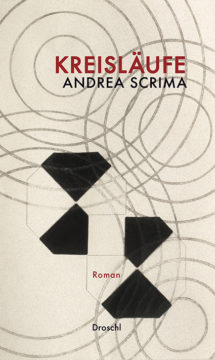
Ally Klein: There’s a scene in Like Lips, Like Skins in which the first-person narrator, Felice, recalls studying the Sunday comics as a child. She buries her nose in the newsprint; when she fetches a magnifying glass to get closer, she discovers an “accumulation of tiny dots.” Individually, they’re no more than “lopsided splotch[es],” but together give rise to a bigger picture. I see a parallel here to the way the novel is stylistically conceived. Memories pop up seemingly at random, and in the end, they produce an image that works intuitively. The book eludes a stringent retelling, but leaves the reader with a sense of understanding something that can’t be expressed in terms of an idea or concept. The discoveries, if that’s what they can be called, are situated elsewhere.
Andrea Scrima: As a child, Felice doesn’t yet know that the interaction between the eye and brain fills in the gaps, the missing information between disparate points; for her, it’s just magic. I use language to create imagery that can exist outside of description or symbolism. In literature, images often have a function, they’re there to convey a certain idea. But some images are irreducible, they’re not all that easy to explain. And these are the ones that interest me most: they’re autonomous, they have a life of their own. Sometimes they’re a bit uncanny.
I’m interested in literature’s resilience, its ability to find a formal language for phenomena that can’t be easily captured in words. A language the reader somehow perceives as “true,” even if they can’t necessarily say how or why. Read more »
by Carol A Westbrook
 One of my earliest memories was of Christmas Eve in 1954. I was about 3 or 4 years old, playing under a table at my grandmother’s house. My sister and a cousin were with me, playing with a small wooden crate filled with straw. The crate represents the manger in the stable in Bethlehem 1,954 years ago, where the animals welcomed the baby Jesus, since there were no rooms in the inn. We three kids were waiting for the adults to come to the table to join us for Wigilia, the traditional Christmas Eve feast, after which we would move to the living room, sing Polish Christmas Carols, and wait for an uncle disguised as Santa to arrive with presents for everyone.
One of my earliest memories was of Christmas Eve in 1954. I was about 3 or 4 years old, playing under a table at my grandmother’s house. My sister and a cousin were with me, playing with a small wooden crate filled with straw. The crate represents the manger in the stable in Bethlehem 1,954 years ago, where the animals welcomed the baby Jesus, since there were no rooms in the inn. We three kids were waiting for the adults to come to the table to join us for Wigilia, the traditional Christmas Eve feast, after which we would move to the living room, sing Polish Christmas Carols, and wait for an uncle disguised as Santa to arrive with presents for everyone.
The wooden crate and the Christmas Eve feast were Polish traditions. This is not surprising since my grandparents were only a few decades away from their life in Poland, when they left the to marry and raise a family in Chicago. Like most of the other folks in our neighborhood, we still had strong ties to Polish customs and religion.
Our Catholic religion was full of magic, which we took for granted. Prayers to St. Anthony would help you find something you lost. Want something really, really bad? Say a novena, for 9 days of prayer. St. Jude can help solve hopeless cases, like cancer. If you were paralyzed or had some other awful condition, you might make a pilgrimage to Lourdes, in hopes of a cure. Many were cured there. Read more »